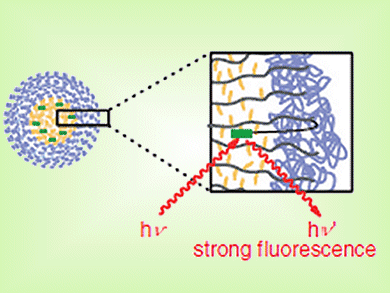The preparation of highly fluorescent nanoparticles is of great importance in optical tumor imaging during endoscopy or surgery. Kouichi Ohe and co-workers, Kyoto University, Japan, have developed self-assembled nanoparticles of amphiphilic brush-like copolymers that incorporate a dye and targeting agent as optical tumor imaging probes. They found that the length of side chains that connect the dyes and targeting agents to the copolymer significantly affect the fluorescence intensity and tumor specificity of the self-assemblies.
Self-assemblies with short chains and a hydrophobic targeting agent, such as folate moieties, accumulated in tumor sites with low selectivity. Longer linkers conjugated with hydrophilic targeting agents, such as glucosamine and cyclic arginine–glycine–asparatic acid peptide, improved tumor specificity and fluorescence signal strength. These self-assemblies enabled the efficient and rapid detection of tumor tissues in vivo.
The results might offer general principles for designing artificial copolymers for imaging probes or drug delivery.
Image: © Wiley-VCH
- Influence of Side Chain Length on Fluorescence Intensity of ROMP-Based Polymeric Nanoparticles and Their Tumor Specificity in In-Vivo Tumor Imaging
K. Miki, K. Oride, A. Kimura, Y. Kuramochi, H. Matsuoka, H. Harada, M. Hiraoka, K. Ohe,
Small 2011.
DOI: 10.1002/smll.201101637




